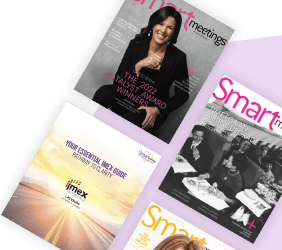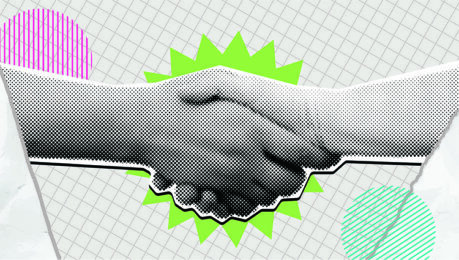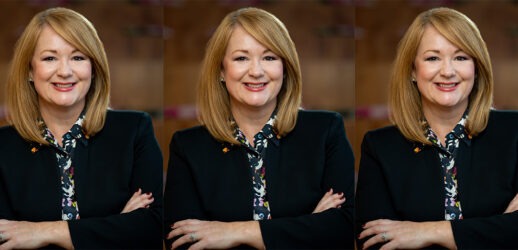A thorough procurement process, though often unseen by the end consumer, plays a pivotal role in ensuring that organizations function optimally. It has been widely used by many industries to ensure they are working with quality suppliers. It can also be effectively used by meeting and event teams of all sized to deliver better end products.
A properly implemented procurement process directly impacts the bottom line, operational efficiency and the quality of products or services. Effective procurement strategies not only ensure that companies get the best value for their money but also play a role in risk management, innovation and corporate social responsibility.
An organization that undervalues the importance of procurement often pays for it in numerous ways—financial and legal.
A 7-Step Process
A true process will go beyond RFP sourcing and site selection, contracting and negotiations. While these siloed activities might have been helpful when they emerged, today they are less than optimal in the never-ending chase for cost savings, data gathering, personalization and process optimization.
Read More: Year of the Sustainable RFP
Let me connect the dots for you.
By definition, procurement is the structured process through which organizations acquire goods and services from suppliers. It might seem like a straightforward purchasing activity, but a robust procurement process is a critical component in determining an organization’s success. It should connect all the phases of conference planning, prevent unforeseen obstacles and set a solid foundation for the conference’s success.
It’s like going on a treasure hunt to find the perfect pieces for your event at the right price, terms and conditions, and over time, gather this data to create a factual database. Procurement principles are useful tools for you to establish your own organization’s buying power for future conferences.
Procurement isn’t just about finding the cheapest option. It’s about ensuring quality.
Following is a 7-Step Process pulled from the gaps and inconsistencies I have identified over my 20-year career. Hopefully, this will act as a steppingstone for strategic conversations with suppliers and vendors.
Step 1: Risk Matrix and Analysis
By establishing a systematic risk matrix and analysis, you gain the ability to foresee potential pitfalls and proactively address them. This not only safeguards the success of an event but also reduces potential negative impacts on participants and the environment.
Step 2: Pre-sourcing Assessment and RFP Creation
Take an “inventory” of past events to effectively transform the RFP from a wish list to a fact list. Pre-sourcing assessment goes beyond past spend, total room nights with rates and F&B minimums.
Read More: Cooking Up Culinary Excellence
Step 3: Sourcing and Vendor Profile
This is where the holistic nature of the process comes to the forefront. By considering not only cost and speed but also the social and environmental implications of sourcing decisions, you can influence the supply chain in a positive way. The choices made here ripple through to create a more responsible and sustainable event industry.
Step 4: Site Tour and Evaluation
Thoroughness and attention to detail are key. With site tours and intentional evaluations as part of the supplier relationship management framework, you gain insights that extend beyond meeting logistics.
Step 5: Contract Negotiations and Management
If all steps so far were followed with attention and thoroughness, this step is establishing clear expectations, shared responsibilities and a commitment to sustainability create a solid foundation for your event’s success.
Step 6: Meeting Logistics Plan and On-site Execution Blueprint
Flawless execution is every meeting planner’s dream. The 7-Step Process acknowledges this and elevates it further by considering the minutest details in the meeting logistics plan and on-site execution blueprint so participants experience a seamless, immersive and impactful event.
Step 7: Post-event Evaluations and Analytics
The journey doesn’t end when the curtains close and the lights dim. Post-event analytics allow you to gather insights, measure outcomes and identify areas for improvement. This iterative approach includes additional evaluations beyond post-event survey from attendees, and not only refines the planning process but also contributes to the industry’s collective growth and evolution.
Meeting and event executives are often tasked with the impossible combination of delivering value to stakeholders and being cost-conscious. The 7-Step Process to Event Design with its focus on procurement is a necessary tool for planning flawless quality-driven meetings and conferences.
—
 With an extensive career spanning over 22+ years in the meetings and events industry, Magdalena Bonnelly has worked with and for major suppliers in Poland, where she started at age 18, in a travel agency, designing adventure and incentive travels around Europe. After moving to the United States, she earned a meeting management and MBA while working full-time in sales departments of various hotels.
With an extensive career spanning over 22+ years in the meetings and events industry, Magdalena Bonnelly has worked with and for major suppliers in Poland, where she started at age 18, in a travel agency, designing adventure and incentive travels around Europe. After moving to the United States, she earned a meeting management and MBA while working full-time in sales departments of various hotels.
She has planned meetings for many industries, in different countries around the globe. Now she helps clients plan meetings, conferences and incentive trips through her company, Procurement Strategy Group.





